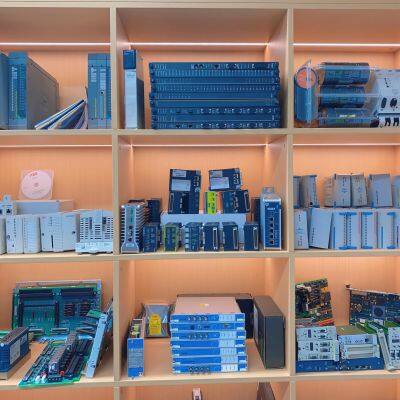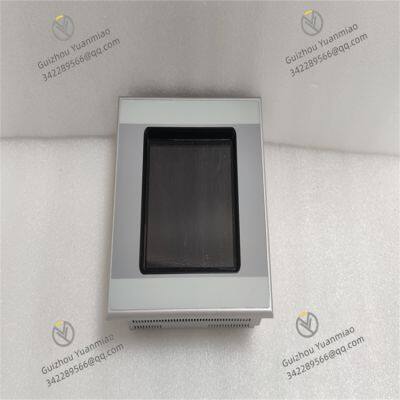Product Description
I. Overview
Eaton XVH-340-57MPI-1-13 is an industrial device with rich functions and excellent performance, playing a key role in the field of industrial automation control. It integrates features such as efficient data interaction, precise control, and excellent environmental adaptability, and is tailored for complex industrial production environments. As a bridge connecting various industrial equipment and control systems, XVH-340-57MPI-1-13 can stably collect on-site equipment data and accurately transmit control commands to actuators, ensuring the efficient and stable operation of the entire production process. Its advanced design concept and reliable quality enable it to perform well in numerous industrial scenarios, making it an indispensable important component in the process of industrial automation.
II. Technical Parameters
Display specifications: Equipped with a 5.7-inch display with a resolution of 320×240 pixels, adopting STN color display technology. Although it may be slightly inferior to some high-end TFT displays in terms of color richness and contrast, it can clearly present various information such as equipment operating parameters and alarm prompts for the common text and graphic display needs in industrial applications, meeting the requirements of operators in industrial environments for quick identification of key information.
Touch technology: Adopts infrared touch technology, which has the advantages of long service life and strong anti-interference ability compared with resistive and capacitive touch technologies. Even in harsh industrial environments with oil stains, dust, etc., it can accurately respond to the operator's touch operations, ensuring the smoothness of human-machine interaction and reducing operational errors caused by insensitive touch.
Communication interfaces:
Ethernet interface: Supports 100Base-TX/10Base-T standards, enabling fast and stable connection to the factory internal network for high-speed data transmission. It can be used for remote monitoring of equipment operating status, downloading equipment configuration files, and data interaction with the upper computer control system, greatly improving the convenience and real-time performance of production management.
USB interface: As an important interface for device expansion and data transmission, it can be used to connect external storage devices (such as USB flash drives) for convenient operations such as program backup and data record export; it can also connect specific USB devices to achieve function expansion.
CAN interface: Complies with the CANopen communication protocol, which is widely used in the field of industrial automation and has the characteristics of high reliability, strong real-time performance, and excellent multi-node communication capability. Through the CAN interface, XVH-340-57MPI-1-13 can mount up to 127 devices, building a large and stable industrial control network to ensure efficient collaboration between various devices.
Power parameters: The working voltage range is 20.4V DC to 28.8V DC. This wide voltage input design can adapt to the power supply conditions of different industrial sites, reduce the impact of voltage fluctuations on the device, and ensure stable operation of the device. In typical working conditions, the device has low power consumption, effectively reducing energy consumption and meeting the energy-saving needs of modern industry.
Protection level: The front panel of the device has a protection level of IP65, which can effectively prevent dust and water, and can withstand low-pressure water jets from all directions, ensuring normal operation in dusty, humid, or even slightly splashed industrial environments; the rear protection level is IP20, providing basic protection for internal electronic components to prevent foreign objects from entering.
Physical specifications: The device has a compact shape, with a front panel width of 212mm and a height of 156mm, and an appropriate installation depth, which can be easily embedded in various industrial control cabinets, saving installation space. The overall structure is sturdy and durable, with a metal shell and front panel, which not only enhances the mechanical strength of the device but also effectively shields external electromagnetic interference, improving the stability and reliability of the device.

III. Functional Features
Support for rich interface elements: Built-in various common interface elements such as buttons, input boxes, images, etc. Through simple dragging and configuration operations, a human-machine interaction interface that meets actual needs can be quickly built. Operators can conveniently perform operations such as parameter setting, start/stop control, and viewing real-time device status through these interface elements, greatly simplifying the operation process and improving production efficiency.
Flexible communication networking capability: With its diverse and powerful communication interfaces, XVH-340-57MPI-1-13 can easily communicate and connect with different types of devices. Whether it forms a small automation control system with industrial on-site equipment such as PLCs, sensors, and actuators, or accesses a large factory automation network, it can achieve seamless docking. Through the CANopen protocol, the operating status of various devices in the network can be precisely controlled, realizing distributed collaborative control to meet the control needs of complex industrial production processes.
Reliable safety protection mechanism: Equipped with complete safety functions, such as 200-level password protection. Operators with different permissions have different operation rights, which can effectively prevent unauthorized personnel from misoperating or maliciously tampering with the device, ensuring the safety and stability of the production process. At the same time, the device fully considers electrical safety in its design, with overvoltage and overcurrent protection functions to prevent damage to the device and personnel due to electrical faults.
Convenient program development and maintenance: The development software based on the IEC61131-3 standard provides users with a familiar and convenient programming environment, facilitating the development and debugging of control logic. Combined with Galileo software, it can easily create intuitive and user-friendly visual interfaces, reducing development costs and difficulties. In addition, the device supports hot-swapping function, allowing faulty modules to be directly replaced during system operation without stopping the machine, greatly shortening equipment maintenance time and reducing losses caused by production interruptions due to equipment failures.
Strong environmental adaptability: In addition to having a high protection level, the device performs well in anti-vibration and anti-electromagnetic interference. Special circuit design and shielding measures are adopted to effectively reduce the impact of external vibration and electromagnetic interference on the normal operation of the device, ensuring stable operation even near strong interference sources such as motors and frequency converters. The working temperature range is 0°C to 50°C, which can adapt to temperature changes in most industrial environments, and can operate reliably whether it is near a high-temperature industrial furnace or in a relatively low-temperature refrigerated workshop.

IV. Common Faults and Solutions
Touch screen unresponsive
Possible causes: Dirt or damage on the touch screen surface; failure of the infrared touch sensor; device crash.
Solutions: Clean the touch screen surface with a clean soft cloth to remove oil, dust, and other dirt; if the touch screen is damaged, contact professional maintenance personnel for replacement; try to restart the device. If the device still cannot respond normally, it may be a system software failure, and the system software needs to be reinstalled or upgraded.
Communication connection failure
Possible causes: Loose or damaged communication cables; incorrect interface settings; network failure.
Solutions: Check the communication cable connections to ensure the cable plugs are tightly inserted without looseness. If the cable is damaged, replace it in time; enter the device's communication settings interface to check whether the parameter settings of Ethernet, CAN, and other interfaces are correct, such as IP address, subnet mask, baud rate, etc.; check the working status of network devices (such as routers, switches) to ensure network smoothness, and test the network connection through the ping command.
Abnormal display (such as screen garbling, black screen, etc.)
Possible causes: Damaged display; graphics card failure; device overheating.
Solutions: If the display has problems such as screen garbling or black screen, first check the heat dissipation of the device, clean the dust in the device's heat dissipation holes to ensure normal heat dissipation of the device. If the problem remains unresolved, it may be a hardware failure of the display or graphics card, and contact the manufacturer's after-sales service personnel for inspection and maintenance.
Device cannot start
Possible causes: Power failure; motherboard damage; loss of system files.
Solutions: Use a multimeter to measure the power output voltage to check whether the power supply is working normally. If the power supply is faulty, replace it with a suitable power module; if the power supply is normal, it may be a problem with the motherboard or system files. The device needs to be sent back to the manufacturer for professional maintenance, such as reinstalling the system or replacing the motherboard.


TEWS TPMC815-11 ARCNET Interface Module
TEAM BG0090 Control Module
TEAM BL0170 Expansion Module
TEAM BL0308 Expansion Module
MKS T3BIB-29916 Valve DeviceNet Interface
STEC S83-1003-01 Controller Module
SCHROFF MPS022 DC Power Supply Module
SBS VIPC616 91611524 4-slot 6U VME IndustryPack Carrier
SAT CM3141-02-03 Proximitor Seismic Monitor
SAT CM3142-01-03 Proximitor Seismic Monitor
SAT RM3141-01-02 Proximitor Seismic Monitor
RAMIX PMC008A 700502 PMC to Mezzanine Adapter
 yezi
Hi there! Welcome to my shop. Let me know if you have any questions.
yezi
Hi there! Welcome to my shop. Let me know if you have any questions.




